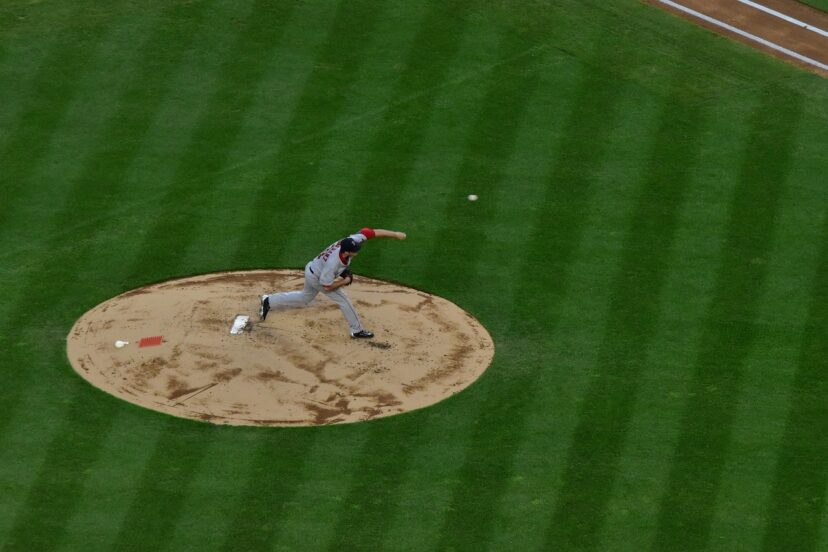NFL betting is all about finding an edge, and few factors are as intriguing as the…
Pitch Tunneling for MLB Betting Predictions

Pitch tunneling for MLB betting predictions is a next-level approach that goes far beyond traditional stats. While most bettors focus on surface numbers – ERA, win-loss records, or recent team performance – true betting value often hides in the details. If you want to gain a real edge, you need to understand what’s happening on the mound. And pitch tunneling is one of the most powerful tools for doing just that.
What Is Pitch Tunneling?
Pitch tunneling is the art of deception. A pitcher throws different pitches—fastballs, curveballs, sliders, changeups—all from the same release point and arm action. To the hitter, they look identical… until it’s too late. Each pitch follows a nearly identical path (or “tunnel”) early on before breaking in different directions.
That short delay before the break is crucial. It shrinks the batter’s decision window, leading to more strikeouts, weak contact, and lower scoring overall.
If this is new to you, check out these helpful video breakdowns:
Gerrit Cole Example – Robby Rowland on YouTube: A simple, visual intro to tunneling.
Yu Darvish Tunneling Breakdown – Ignite Baseball: A deep dive into how Darvish uses tunneling to dominate hitters.
Why Pitch Tunneling Matters in MLB Betting
When a pitcher successfully tunnels, even elite hitters struggle to make solid contact. That subtle deception creates opportunities in several betting markets:
- Unders: Fewer hits and runs often lead to lower final scores.
- Strikeout Props: Deception = more missed swings = potential K prop overs.
- First Five Innings (F5): Tunnelers usually start strong, making early-inning bets more predictable.
- Pitcher Longevity: Deception helps extend starts, which may impact bullpen usage and full-game outcomes.
Best Websites to Track Pitch Tunneling Data
Although no site currently offers a single metric called a ‘tunnel rating,’ several websites provide powerful tools and visuals that make it easier to evaluate pitch tunneling on your own – and who knows, maybe one day we’ll see that stat become a reality.
Baseball Savant – baseballsavant.mlb.com
A goldmine for Statcast data. Focus on:
- Pitch Arsenal and Pitch Movement tabs for each pitcher.
- Release Point Charts: Look for tightly clustered release points—more consistency means better tunneling.
- Horizontal/Vertical Movement: Big differences in break = more deception after the tunnel.
- Pitch Shape Comparison Tool: Overlay pitch paths to see tunneling visually.
Brooks Baseball – brooksbaseball.net
A detailed, no-frills database of pitch tracking data.
- Release Point Graphs: Tighter groupings suggest better tunneling.
- Pitch Trajectory Plots: Track movement across the zone to identify deceptive sequences.
- Pitch Usage Heat Maps: Shows how pitchers disguise pitches in similar zones.
Pitcher List – pitcherlist.com
Known for insightful articles and advanced pitcher analysis.
- Look for “GIF Breakdown” posts and deep dives into pitch sequences.
- Their PLV (Pitch Level Value) metric often highlights tunnelers with underrated performance.
Twitter/X Overlays
Search: Pitcher’s Name + pitch overlay
- Tons of analysts post side-by-side pitch overlay GIFs.
- Great for seeing tunneling in motion (ex: slider vs. fastball from identical release).
Statistical Signs of Strong Tunneling
Even though there’s no single stat that directly measures pitch tunneling, several indicators can point you in the right direction. These signs suggest a pitcher is effectively hiding their pitches, even if the box score doesn’t fully reflect it yet. Paying attention to these can help you stay ahead of the betting markets.
Look for pitchers who show:
- High swing-and-miss rates
- Low hard-hit percentages
- Strong xERA or FIP despite a high traditional ERA
- Convincing tunneling overlays or video evidence
These are the kinds of pitchers who may be flying under the radar. They often rebound quickly from rough outings, which creates value opportunities
Pitch Tunneling Betting Strategies to Explore
Pitch tunneling can quietly shift the balance in a game—giving some handicappers an edge across several markets. While these angles show strong potential, always backtest any strategy before risking real money. What looks promising in theory needs to prove itself over time.
Here are four ways tunneling insights can lead to smarter plays:
- Unders in Games with Two Tunnelers
Pitchers who tunnel well tend to limit solid contact and rack up strikeouts. When both starters show strong tunneling metrics—and external factors like wind blowing in or cooler temperatures support it—the under becomes a high-value play. - Strikeout Props Against Aggressive Lineups
Tunneling creates deception, which leads to more missed swings. If a pitcher with strong tunneling faces a lineup with high chase rates or whiff tendencies, consider betting the over on strikeout props. - First Five Inning (F5) Wagers
Starters with great tunneling typically dominate early. Target them in F5 bets to minimize bullpen risk and capitalize on their initial edge before fatigue or pitching changes come into play. - Buy Low After a Blow-Up Start
Sometimes a pitcher gets shelled—but their tunneling metrics remain solid. The public tends to overreact to bad starts, driving the line in your favor. This is a prime spot to bet on a bounce-back performance, especially in the F5 market.
These strategies don’t guarantee a win, but they help you make sharper, more informed bets that most people aren’t considering. Track your results and tweak your approach as you learn what works best.
Conclusion
Pitch tunneling for MLB betting predictions isn’t just a fancy buzzword – it’s a real edge hiding in plain sight. While it may not show up in traditional box scores, the effects of pitch deception ripple through nearly every part of the game. From limiting hard contact to creating strikeout opportunities and influencing game flow, tunneling can quietly shift outcomes – and betting lines – before the public catches on.
For me personally, pitch tunneling is still something I’m learning about. It’s not a part of my regular strategy yet, but after diving into the data and seeing its potential, it’s definitely a concept I want to explore more deeply moving forward.
If you’re looking for an advantage most bettors overlook, tunneling might just be your new secret weapon. Keep digging, test your angles, and who knows – this might be the missing puzzle piece to make more profit.
Like this article? Pin it on Pinterest!





